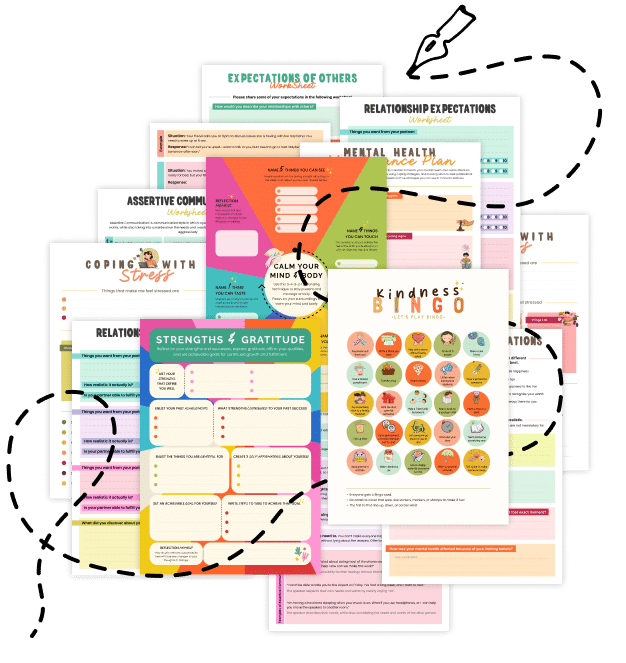20 Things You Should Know About Incremental Desensitization
Whether you’re dealing with anxiety, phobias, or overwhelming stress triggers, Incremental Desensitization offers a structured, gradual path to reducing fear responses. Learn what it is, why it works, and how to apply it to foster lasting emotional resilience.
1. What Is Incremental Desensitization?
Incremental Desensitization is a therapeutic method where individuals face their fears or stress triggers in small, manageable steps. This gradual approach helps your brain adapt without triggering a full-blown fight-or-flight response.
2. Incremental Desensitization Foundations in Behavior Therapy
Rooted in behavioral psychology, the technique stems from the principle that repeated exposure to a feared stimulus—or a representation of it—can lessen the body’s anxiety response over time.
3. Different from Flooding
Unlike flooding, where you confront the most intense level of fear immediately, incremental desensitization takes a gentler, systematic approach. You build up your tolerance in stages, ensuring each step feels safe enough to handle.
4. Role of Relaxation Techniques
Success often hinges on pairing exposure to the feared stimulus with deep breathing, visualization, or other relaxation strategies. This coupling retrains your body to stay calm and present during each incremental step.
5. Anxiety Hierarchies
A common first step is creating an “anxiety hierarchy”—a list of triggers arranged from least to most frightening. For example, if you fear public speaking, you might start with practicing a speech alone, then with a friend, and finally to a small group.
6. Flexible Pacing
How quickly you move through each level of exposure depends on your comfort and coping ability. Some individuals progress in a few sessions; others need more time—there’s no “one-size-fits-all” timeline.
7. Works for a Range of Phobias
Incremental Desensitization can address everything from fear of spiders and heights to social anxieties and performance stress. The key is methodically breaking down the threat into bite-sized exposures.
8. Small Successes Build Confidence
Confronting a lower-intensity trigger and handling it well can offer a sense of victory, motivating you to tackle bigger challenges. These “micro-wins” are critical for sustained progress.
9. Brain’s Adaptation
Each careful exposure allows the amygdala (your brain’s threat sensor) to learn that the stimulus isn’t as dangerous as originally perceived. Over time, the panic response diminishes.
10. Avoiding Avoidance
Because anxiety pushes us to avoid discomfort, incremental desensitization helps reverse that pattern. By approaching fear systematically, you weaken its grip on daily choices and behaviors.
11. Pairing with Cognitive Tools
Techniques like Cognitive Defusion or reframing negative thoughts can amplify the effectiveness. Changing your mindset about the feared situation reduces catastrophic thinking while you practice exposure.
12. Practice Beyond Therapy
You don’t always need a formal clinical setting. While professional guidance helps with severe cases, you can apply smaller incremental steps on your own—like driving slightly farther each day if you fear highway travel.
13. Control and Autonomy
You decide when you’re ready to move up the hierarchy. This self-directed aspect ensures you feel in control, helping prevent overwhelm and promoting a sense of mastery at each stage.
14. Group Support
Some people benefit from group-based incremental desensitization—like group therapy for social anxiety. Encouragement from others and shared experiences can reduce stigma and normalize the process.
15. Risks of Moving Too Fast
Jumping to higher-intensity exposures prematurely can trigger panic or setbacks. Careful pacing, with adequate relaxation and coping skills, prevents retraumatization or reinforced fears.
16. Success Rates
Research shows systematic desensitization can yield lasting improvements for many anxiety disorders. Commitment to consistent practice and follow-through often leads to meaningful, enduring results.
17. Real-World Maintenance
After conquering your initial hierarchy, you might design “maintenance exposures” to keep your confidence fresh. Occasional practice reduces the risk of slipping back into avoidance habits.
18. Combining with Medication
For severe or persistent anxieties, medication (like beta-blockers or anti-anxiety meds) can complement incremental desensitization by lowering baseline anxiety levels, making exposures more manageable.
19. Self-Care Is Key
Emotionally taxing work—like facing fears—requires solid self-care. Adequate sleep, good nutrition, and supportive relationships keep your resilience high, ensuring you don’t burn out during the process.
20. Related Topics to Explore
- Progressive Exposure Training: Similar systematic approaches for confronting phobias.
- Task-Specific Anxiety Management: Tailored strategies for situations like test-taking or public speaking.
- Self-Handicapping Behaviors: Discover how avoidance can sabotage progress and how to break that cycle.
- Emotion Regulation Techniques: Strengthen your capacity to stay calm under stress.
Quick Tips to Boost Incremental Desensitization
- Craft an Anxiety Ladder: Write out your triggers from mild to severe—focus on the easiest steps first.
- Use Relaxation Tools: Integrate breathing exercises or muscle relaxation when facing each level.
- Track Small Wins: Keep a journal of each success, no matter how minor, to reinforce progress.
- Stay Patient: Don’t rush exposures—let your comfort dictate when to move to the next step.
- Enlist Support: Practice with a friend or seek professional guidance if your fears are deeply ingrained.
Incremental Desensitization transforms fear into a stepping stone—by confronting mild triggers, you build the confidence to handle progressively tougher ones. With patience, self-awareness, and consistent effort, you can rewrite your brain’s response to anxiety and regain control over the situations that once felt intimidating. Share this with friends or colleagues seeking practical ways to face fears—help them discover the power of systematic, gentle exposure for a braver, freer life!


